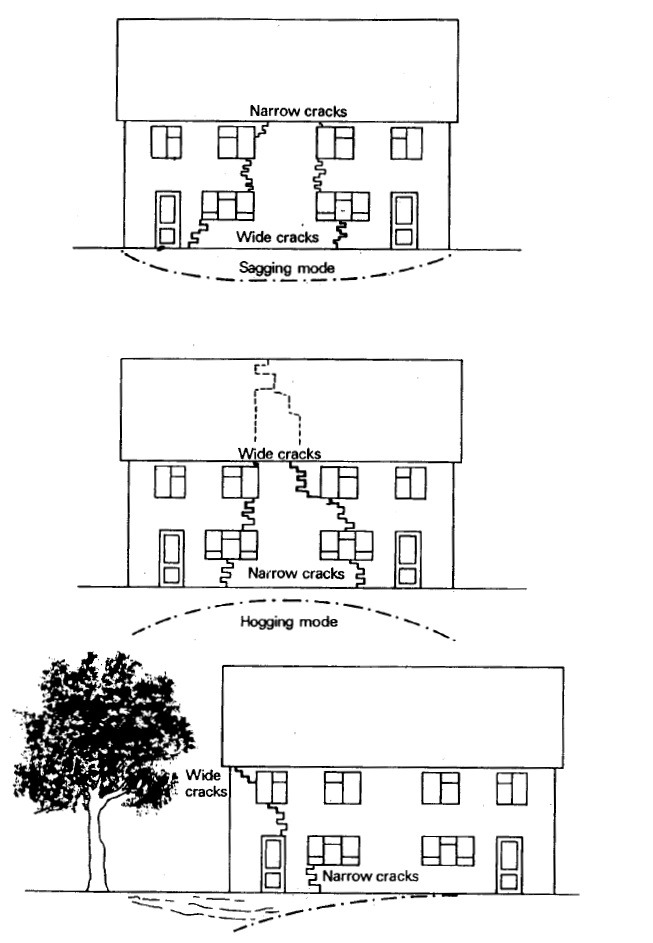Types of foundation movement – Ground movements in both the vertical and horizontal directions can occur beneath the foundations of a building. Settlement is usually the major concern, although horizontal strain and heave can be important in some circumstances.
Although shrinking and swelling of bricks can cause local cracking around windows and at junctions of walls, it is rare for the cracks to exceed 5 mm and they seldom extend through the damp-proof course (DPC). In contrast, foundation movement tends to produce a few isolated cracks, often continuous through the DPC and sometimes more than 5 mm wide. Foundation movements tend to affect large sections of wall, so the cracking usually manifests itself at weak points, such as window openings and doors. A building may deform in sagging or hogging mode and the pattern and taper of the cracking can be associated with a particular mode of distortion (Figure 1).

Other indications of foundation movement are sticking doors and windows, displaced roof joists, gaps in roof tiles and disrupted services. However, the best way of confirming that the foundations have moved is to measure the out-of-level along a course of bricks or to measure the verticality of external walls. Damage is unlikely to have occurred unless there has been at least 25 mm of differential movement and this should be distinguishable from any construction tolerances, which should be less than about 20 mm for a typical pair of semi detached houses. Building errors are usually randomly distributed whereas foundation movement is indicated by a trend in level change.
Indicators of foundation movement are summarised in Table 1.
Indicators of foundation movement
There are a number of features which may indicate that foundation movement has occured and may be continuing:
| – isolated cracks at weak points in structure; |
| – cracks taper from top to bottom or vice versa |
| – cracking is continuous through DPC |
| – crack widths may exceed 5 mm |
| – both external and internal cracks which are usually at the same location |
| – pattern of cracks which is compatible with a credible mechanism of foundation movement |
| – sticking doors and windows |
| – disrupted drains and services |
| – measurable out-of-level or out-of-plumb of walls |
The most acute foundation problems on poor ground are often associated with small buildings for which deep foundations were not an economically viable solution. Where a stiff raft foundation has been provided, it should prevent distortion of the building due to differential settlement (Figure 2) and should resist horizontal tensile forces; the remaining concern is whether the tolerable tilt will be exceeded.